BLOG Post 1 June 5th, Group A: Andy, Sol, Grace
Today was our first full day in Kenya! After the previous 24 hours of travelling, we woke up well rested and excited. While waiting on a delicious and filling breakfast prepared for us by the great folks at Kolping Conference Center, the birding began. Cameras and gear were busted out and the ID process began – some notable sightings were the Amethyst Sunbird and Black Kite. Andy was lucky enough to see a Cinnamon Chested Bee-Eater! Steve, Carol and Yuxiang went off to chat with folks at the Kenyan Wildlife Research & Training Institute about possibilities for collaboration on wildlife genomes and conservation. After a little more exploring, photography, and birding, we packed up our things and piled into the Bunduz truck to begin our trip to Lake Naivasha. In the early legs of the trip, we passed some beautiful flora, and had great vantage points over the red-soiled agricultural countryside. Not long into our drive we took a brief pause at a viewpoint overlooking the great Rift Valley. The sheer magnitude of the landscape extending out around us had the whole group in awe, and the distant mountains -ranging from 2000 to 9000ft of elevation- enclosing the valley were incredible. Needless to say, many pictures were taken. We stretched our legs and browsed the wares of some local sellers – some of us came away with some sweet trinkets to bring back home! With a few dozen more photos and a few thousand shillings lighter, we piled back onto the truck and continued on our journey.
On our way to Lake Naivasha, we got to admire the landscape of this megadiverse country. We saw zebras, baboons, and antelopes mixed with cattle. We noted some interesting plant species including some that belong to the Euphorbeaceae family. This plant family was a nice sight, as they are an example of convergent evolution – they share a lot of phenotypic traits, but evolved separately from cacti. When we got to Lake Naivasha, we took our gear to our tents that the Bunduz staff had generously set up for us, and then immediately began exploring. This particular habitat is the threshold between aquatic and terrestrial ecosystems which allows for high diversity. Next, we were served a delicious dinner of spaghetti, meat, potatoes, and zucchini. We were then introduced to Mukhtar owner of Bunduz and his amazing staff: John (the First), John (the Second), and Chenze. After dinner, co-instructor Carol Muriuki taught us about politics in modern Kenya and the 47 ethnic groups within it. This led to a group discussion about misconceptions of Africa, the lasting effects of colonialism, and wildlife management. Steve challenged all the students to compete in a Bird-a-thon that consisted of identifying as many birds as possible within an hour. The group currently writing this blog dominated the competition, winning by a landslide with 17 species identified in just 60 minutes – all lifers for us. Some interesting species that the groups identified included the Lilac-breasted roller and Hildebrandt Spurfowl. Finally, we discussed what the best strategies are for amateur naturalists to identify birds and other animals. The discussion eventually devolved into various discussions about snakes, grant proposals, and possible activities for the remainder of the trip. The Bunduz team cooked us yet another great meal before we went to bed, hoping to start the next day of our trip well rested. We ended the night with a chat about the climatic and other factors that shape the tropics.

Meeting with Moses Yongo head of the Wildlife Research & Training Institute
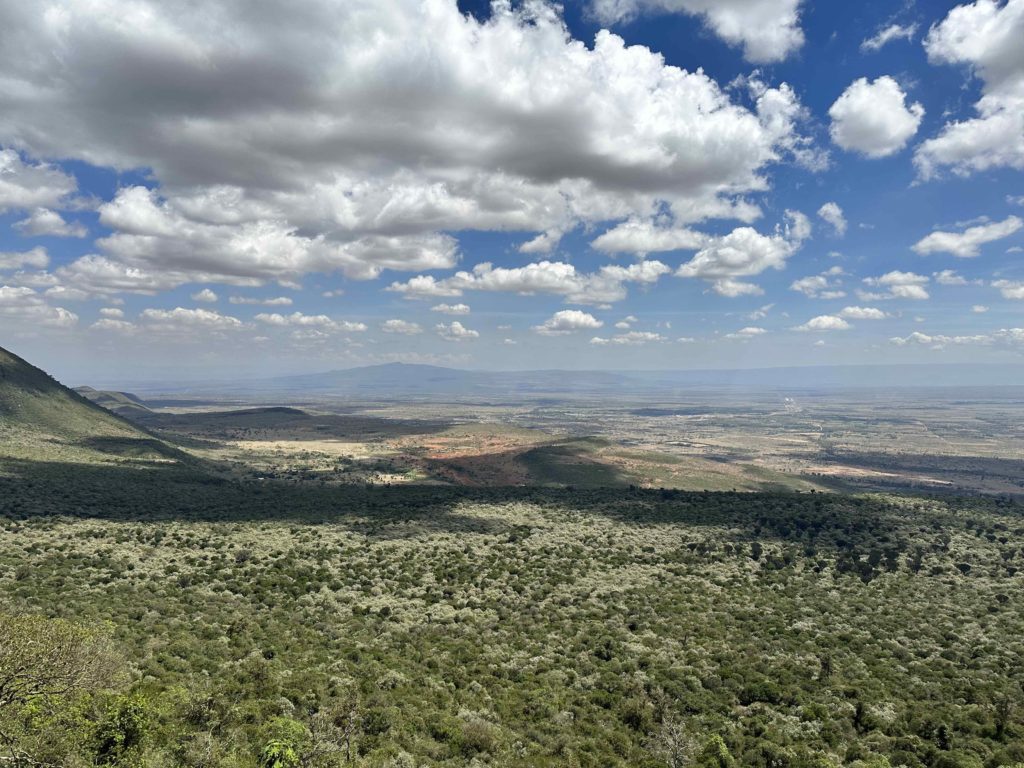
Vista from outlook descending onto the Rift Valley.
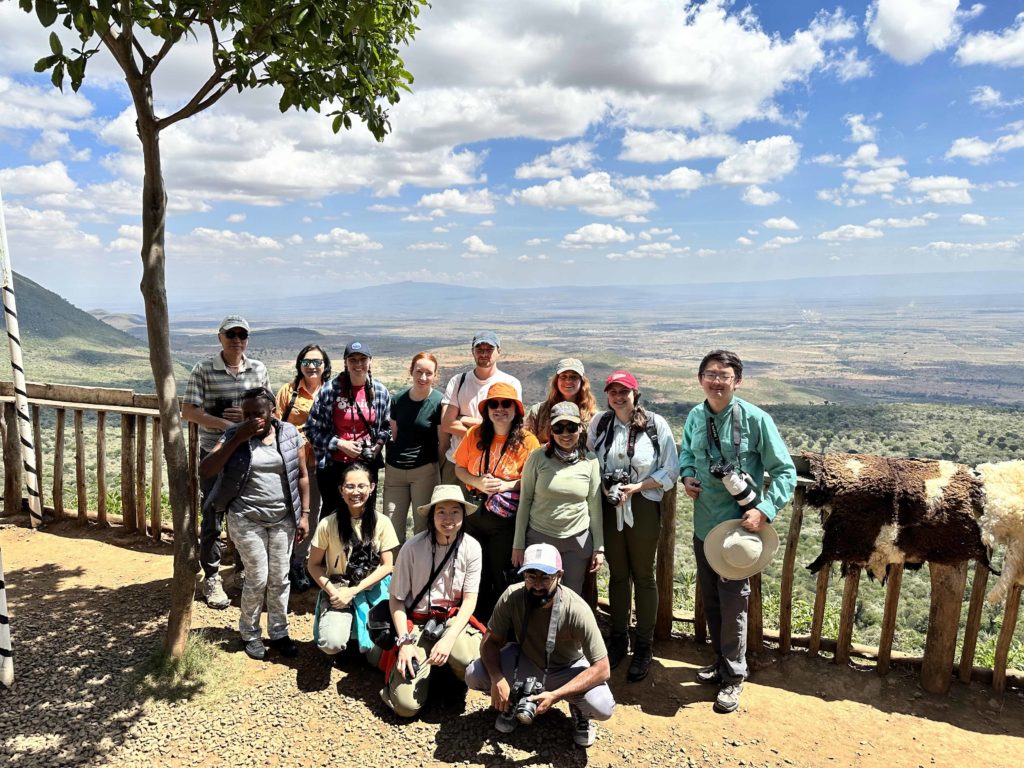
Group at outlook overlooking the Rift Valley.
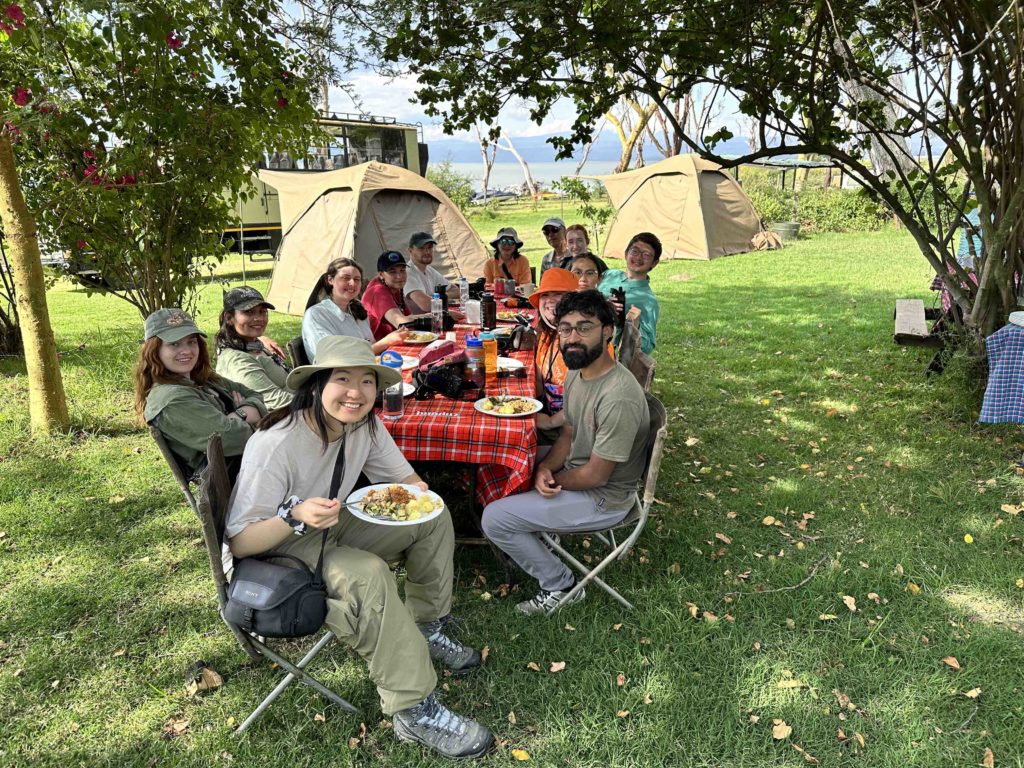
First lunch at Naivasha provided by the Bunduz staff
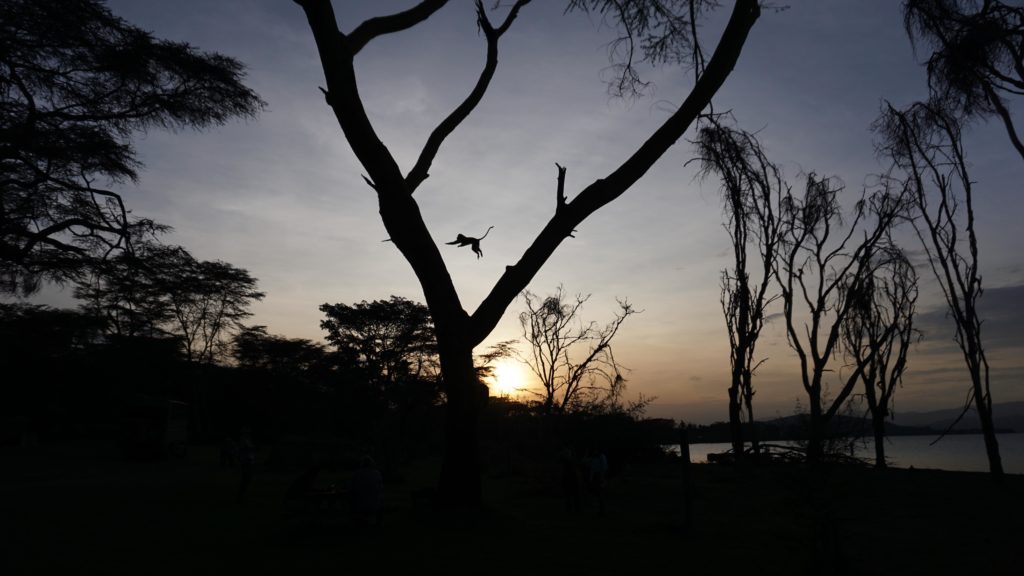
And monkeys can fly. Photo by Kaida Cheah.
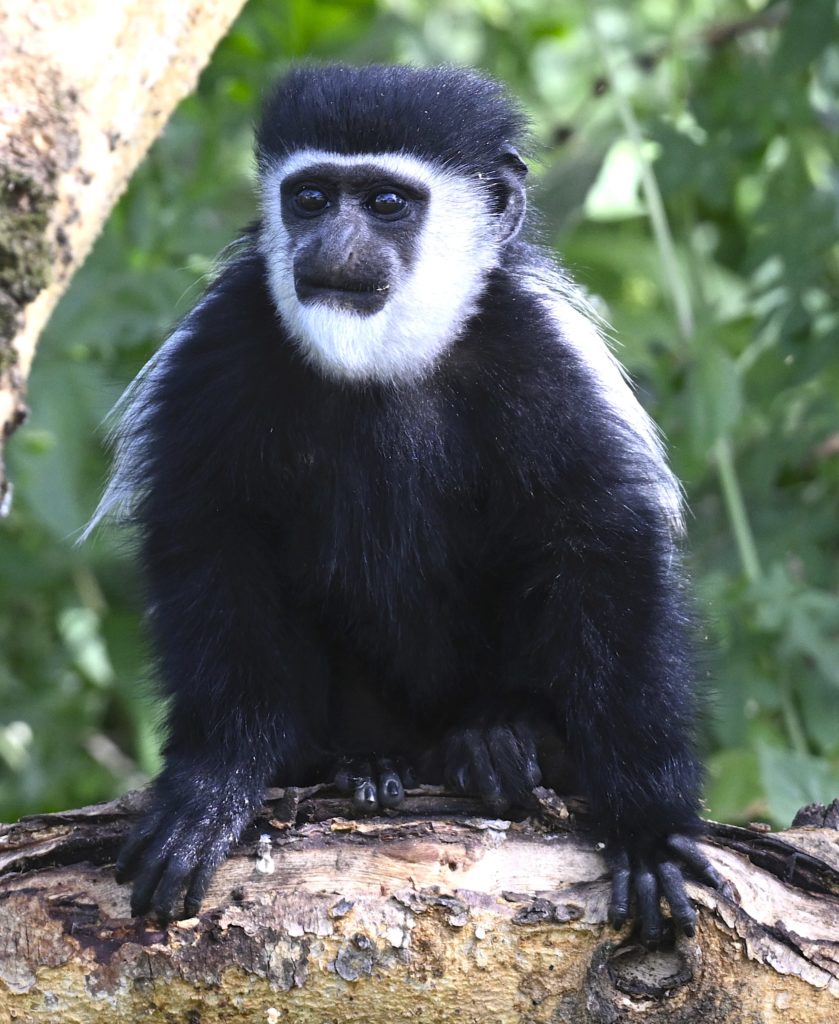
Colobus monkey one of many in a Colobus troop that greeted us.

Well-named superb starling

Arrow-marked babbler pair. Lake Naivasha

Lake Naivasha panorama. Photo by Wei Xu
Since my daughter is on this trip, I have been anxiously awaiting the blogs, and this initial installment did not disappoint!! I savoured the details about the people, the landscape, the wildlife, the food, and I loved the description about piling back in the truck thousands of shillings lighter.
The photos are incredible and so appreciated by those of us who are living vicariously here in Canada.
As someone with a background in biology, I loved the part about convergent evolution.
I can’t wait for the next blogs…keep up the great work.
Thanks for the comment! Next blog post will be tomorrow (our time) but we will try to put up a few photos today.
Thank you so much for this blog! I feel like I’m right there! I can’t believe how much you saw and did in your first full day – the Rift Valley alone would be lifetime highlight for me. Kudos to the captions o the photos – I especially love the one about monkeys flying, and the superbly named Superb bird. ?? I’m also very pleased to see the amount of local engagement and the willingness to discuss vital but difficult issues like colonialism and is long lasting impacts.
Great work on the blog and I can’t wait to hear more!
Wow! What a gift to be able to travel along with all of you on this incredible trip.
I can’t believe how much you saw and experienced on your first day! Seeing the Rift Valley alone would have been a lifetime highlight for me!
I also really appreciate the amazing photos – which help us see what you’re seeing – and their very entertaining cut lines. “And monkeys can fly”. I admit it. I giggled! ??. You’re also very correct that the Superb Starling is most aptly named.
Thanks so much for inviting us to join you in this marvellous classroom!
(Also I apologize if my comments get posted twice.)
I just read through the blogs from day one and am fascinated by how much you have already seen and done.
I know I won’t retain it all (I’m getting older) but the information; the description and very well written .
What an incredible experience.
And that photo of the flying monkey should be entered into a National Geographic photo contest!!!